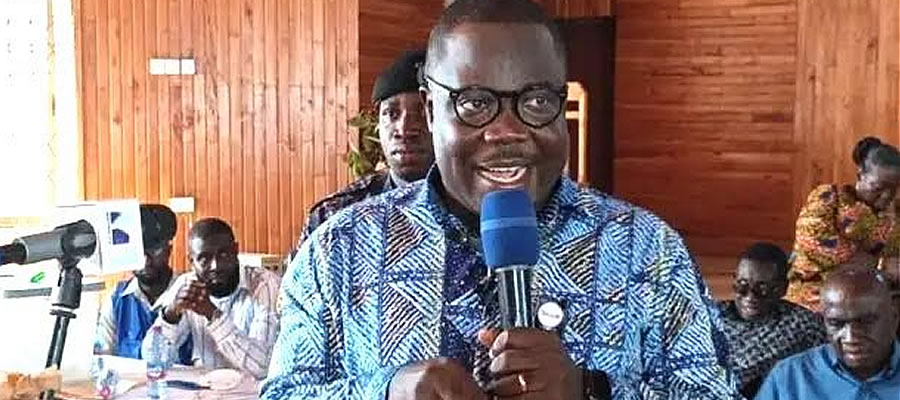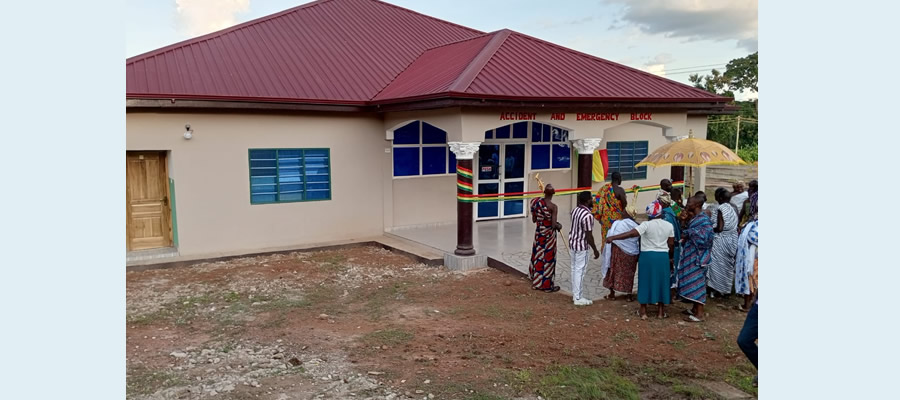

Political Administration
The ease with which development planning, project implementation and decision making are carried out, to a large extent depend on the kind of institution put in place at the District level. This section examines the composition and functions of the Dormaa West District Assembly and the network of institutions it works with. The roles of these institutions and agencies in the planning and implementation; and in the overall development of the District among other things are also examined.
The Legislative Instrument establishing the Dormaa West District Assembly is L.I. 1875 (2012). The Assembly has a total membership of 16, made up of eleven elected members, four government appointees, one Member of Parliament (Dormaa West Constituency) as well as the District Chief Executive who is the representative of the Central Government. In response to the demands for popular participation in enhancing decentralisation and good governance, the Dormaa West District Assembly has one Area Council (Nkrankwanta Area Council) and ten electoral areas (i.e. Asuopri East, Asuopri West, Asuopri Central, Funtudaso, Mpokuasu, Kwadwokumikrom, Kwabenadwomokrom, Kwakuanya, Krakrom and Yaakrom) to facilitate local level administration.
The District Assembly is the highest administrative and legislative body at the District level. It is expected to initiate and coordinate the processes of planning, programming, budgeting and implementation of District plans, programmes and projects. The District Assembly and the various organs are expected to carry out medium and long term planning including integration of population policies and issues, as they pertain to the needs of the District and communities.
The Town/Area councils have the responsibility to strengthen the coordination of the development of the communities to ensure equitable distribution of socioeconomic programmes and projects in a manner that will promote sustainable growth in the District. This facilitates effective participation in decision making at the lowest level. There are also unit committees in each of the ten electoral areas. Each unit committee has five members who assist the Town/Area council to perform its functions.
The existing decentralised departments include MOFA, Central Administration, Ghana Education Service, Social Welfare and Community Development, Works, Finance and Physical Planning. These departments are not fully integrated into the Assembly structures as most of them still continue to look up to their mother departments and ministries for policy direction. The District Assembly is the highest administrative and legislative body at the District level. It is expected to initiate and coordinate the processes of planning, programming, budgeting and implementation of District plans, programmes and projects. The District Assembly and the various organs are expected to carry out medium and long term planning including integration of population policies and issues, as they pertain to the needs of the District and communities.
The Town/Area councils have the responsibility to strengthen the coordination of the development of the communities to ensure equitable distribution of socioeconomic programmes and projects in a manner that will promote sustainable growth in the District. This facilitates effective participation in decision making at the lowest level. There are also unit committees in each of the ten electoral areas. Each unit committee has five members who assist the Town/Area council to perform its functions.
The existing decentralised departments include MOFA, Central Administration, Ghana Education Service, Social Welfare and Community Development, Works, Finance and Physical Planning. These departments are not fully integrated into the Assembly structures as most of them still continue to look up to their mother departments and ministries for policy direction.
Date Created : 11/23/2017 5:13:08 AM












 facebook
facebook
 twitter
twitter
 Youtube
Youtube
 +233 593 831 280
+233 593 831 280 0800 430 430
0800 430 430 GPS: GE-231-4383
GPS: GE-231-4383 info@ghanadistricts.com
info@ghanadistricts.com Box GP1044, Accra, Ghana
Box GP1044, Accra, Ghana